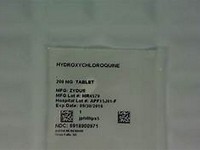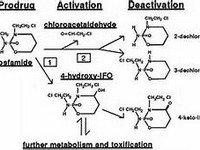Ketorolac trometamol

Ketorolac trometamol
CLINICAL USE
Short-term management of moderate to severe acute postoperative painDOSE IN NORMAL RENAL FUNCTION
Oral: 10 mg every 4–6 hours (elderly every 6–8 hours); maximum 40 mg daily; maximum duration 7 daysIM/IV: initially 10 mg, then 10–30 mg when required every 4–6 hours (every 2 hours in initial postoperative period); maximum 90 mg daily (elderly and patients less than 50 kg: maximum 60 mg daily); maximum duration 2 daysPHARMACOKINETICS
DOSE IN RENAL IMPAIRMENT
GFR (mL/MIN)
DOSE IN PATIENTS UNDERGOING RENAL REPLACEMENT THERAPIES
IMPORTANT DRUG INTERACTIONS
Potentially hazardous interactions with other drugsACE inhibitors and angiotensin-II antagonists: antagonism of hypotensive effect; increased risk of nephrotoxicity and hyperkalaemiaADMINISTRATION
Reconstition
–Route
IM, IV, oralRate of Administration
IV bolus over no less than 15 secondsComments
Compatible with sodium chloride 0.9%, glucose 5%, Ringers, lactated Ringers or plasmalyte solutionsKetorolac trometamol.KEToroLAC TroMETAMoL 411OTHER INFORMATION
Drugs that inhibit prostaglandin biosynthesis (including NSAIDs) have been reported to cause nephrotoxicity, including, but not limited to, glomerular nephritis, interstitial nephritis, renal papillary necrosis, nephrotic syndrome and acute renal failure. In patients with renal, cardiac or hepatic impairment, caution is required since the use of NSAIDs may result in deterioration of renal functionKetorolac and its metabolites are excreted primarily by the kidneyReported renal side effects include increased urinary frequency, oliguria, acute renal failure, hyponatraemia, hyperkalaemia, haemolytic uraemic syndrome, flank pain (with or without haematuria), raised serum urea and creatinine.
See how to identify renal failure stages according to GFR calculation
See how to diagnose irreversible renal disease
Home








